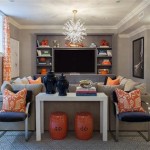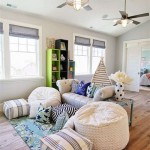Decorating A Small Living Dining Area
A small living dining area presents a unique design challenge. It requires maximizing space to accommodate both relaxation and dining. While limited square footage might seem restrictive, it also presents an opportunity for creative and functional design solutions. The key is to establish a cohesive flow while maintaining distinct zones for each activity. This article will explore practical strategies for decorating a small living dining area, maximizing functionality, and creating an inviting ambiance.
Defining the Zones
The first step in decorating a small living dining area is to define the zones. This not only helps optimize space but also visually separates the two areas, creating a sense of order. Here are some effective techniques:
- Area Rugs: Using distinct area rugs for the living and dining zones can clearly define the spaces. Choose rugs that complement each other and the overall color scheme of the room. A larger rug for the living area and a smaller rug for the dining area can help to create a visual separation.
- Furniture Placement: The placement of furniture is critical. A sofa or sectional for the living area can be positioned perpendicular to the dining table, creating a natural division. Consider using a console table or a bookcase to act as a visual barrier between the two zones.
- Lighting: Lighting plays a significant role in zone definition. Install a pendant light over the dining table to highlight the space, while using ambient lighting for the living area. Table lamps and floor lamps can further enhance the separation and create a cozy atmosphere.
Maximizing Space
In a small living dining area, maximizing space is essential for functionality and aesthetics. Here are some effective techniques for leveraging every inch:
- Multifunctional Furniture: Opt for furniture with dual purposes. A sofa bed can serve as seating for the living area and as a guest bed. Coffee tables with storage compartments provide extra space for books, remotes, and other essentials. A dining table that can be extended or folded away provides flexibility for different occasions.
- Vertical Storage: Utilize vertical space by incorporating shelves, wall-mounted storage solutions, and tall cabinets. This minimizes floor space and maximizes storage capacity. Open shelving can be used to display books, decorative items, or even serve as a bar area.
- Mirrors: Mirrors are a fantastic way to create the illusion of more space. Place a large mirror on a wall opposite a window to reflect natural light, making the room appear larger. Mirrors can also be incorporated into the design of furniture, such as console tables or sideboards.
Creating Visual Flow
While defining zones is crucial, it's essential to maintain visual flow to prevent the space from feeling cramped or disjointed. Here are some strategies for creating a seamless transition between the living and dining areas:
- Color Palette: Choose a cohesive color palette for both zones. A neutral background color can help create a sense of spaciousness, while accent colors can be used to add pops of personality in both areas. Consider using complementary colors or analogous colors to create a sense of unity and flow.
- Consistent Flooring: Using the same flooring material throughout the space helps unify the areas. Consider using a light-colored flooring material like hardwood or tile to make the room feel larger and brighter.
- Matching Decor: Select decor elements that complement each other, such as throw pillows, throws, and artwork. This creates a sense of cohesion and visual harmony. For example, a table runner in the dining area can coordinate with the color of the sofa cushions in the living area.
Adding Personality
While functionality and space optimization are crucial, don’t neglect the element of personality. Infuse your unique style into the design by adding personal touches. This includes:
- Artwork and Wall Decor: Artwork can instantly elevate the ambiance of a small living dining area. Choose pieces that evoke a sense of relaxation and comfort. Family photos, prints, or paintings with a cohesive theme can create a welcoming and personal touch. Don’t be afraid to play with different sizes and frames to add visual interest.
- Plants: Introduce greenery to bring life into the space. Plants help purify the air, create a refreshing ambiance, and add a touch of nature. Opt for low-maintenance plants that can thrive in indoor conditions.
- Textiles: Use textiles to add warmth, texture, and personality. Throws and pillows in different materials and patterns can add visual interest. Choose fabrics that are comfortable, durable, and complement the overall design scheme.
Conclusion
Decorating a small living dining area requires careful planning, maximizing space, and creating a sense of flow. By defining zones, utilizing multifunctional furniture, and incorporating personal touches, you can transform a small space into a functional and inviting haven. Remember to prioritize your needs and preferences, and most importantly enjoy the process of creating a space that reflects your unique style.

Design Dilemma How To Create A Dining Room In Small Space

Living Room And Dining Design Ideas Designcafe

Small Dining Room Ideas Space Rooms

Стулья стол Living Room Dining Combo Small Rooms Condo

15 Best Small Living Room Ideas How To Decorate A

44 Best Small Living Room Ideas How To Decorate A

30 Living Room Dining Combo Ideas 2025 One For All Rectangle Rectangular Rooms

Living Room Dining Combo Ideas With Tricks Doğtaş

11 Design Ideas For Splendid Small Living Rooms

How To Make Dining Area In Living Room







